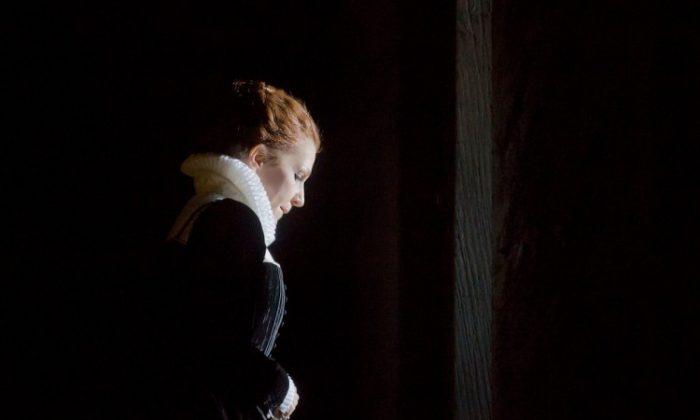NEW YORK—Bel canto literally means “beautiful singing” but, as the Metropolitan Opera’s current production of “Maria Stuarda” shows, these operas can also provide dramatic fireworks.
Gaetano Donizetti’s 1834 opera is based on Friedrich Schiller’s play “Mary Stuart” about the conflict between Queen Elizabeth I and Mary Stuart, that is, Mary, Queen of Scots (the title character of the opera). The work is one of the composer’s three Tudor queen operas; the others are “Anna Bolena” (which the Met presented last season) and “Roberto Devereux.”
“Maria Stuarda” is a tragedy about the rivalry between Elizabeth and Mary. The royals, who were cousins, could not have been more different. The first was Protestant (known as the “virgin queen”) and the second was Catholic and had been married three times.
The two had an inherent conflict since some viewed Elizabeth as illegitimate and Mary as the rightful heir to the throne. Mary had been forced to flee from Scotland after the rebellion of the nobles there and sought asylum in England. However, Elizabeth had her imprisoned for a number of years.
The opera begins in the English court where the brother of the King of France is seeking, without success, to marry Elizabeth. She is in love with Robert Dudley (the Earl of Leicester), but fears that he harbors feelings for Mary. Dudley secretly agrees with Mary’s custodian, Talbot (Earl of Shrewsbury), to seek Mary’s release and convinces Elizabeth to ride on a hunt near Mary’s prison.
The meeting between the two queens never occurred in real life. It was the creation of Schiller and is incorporated into the opera, and is the dramatic high point. Mary is walking freely in the park outside Fotheringhay Castle, where she is incarcerated, when she hears that Elizabeth is approaching.
Dudley goes ahead of the others and urges Mary to be humble in order to obtain her release. The meeting is a disaster. Elizabeth accuses Mary of treason, murder (of her second husband), and licentiousness. Mary then loses her temper and calls Elizabeth illegitimate and other names, after which Elizabeth has her cousin sent back to prison.
Cecil (Elizabeth’s secretary of state) produces evidence that implicates Mary in a plot to assassinate her and convinces her to sign a death warrant for her cousin. When Dudley finds out, he tries to talk Elizabeth into rescinding the order, but instead she commands him to attend the execution.
At Fotheringhay Castle, Mary is told that she will die the next morning. She is refused permission to confess to a Catholic priest but finally she unburdens her soul to Talbot, including her unwitting acquiescence in an assassination plan.
As she is about to be beheaded, she urges her servants not to shed tears and leads them in prayer. Mary tells Cecil that she forgives her cousin. Appearing as a martyr, dressed in red, she ascends the scaffold.
As Mary, Joyce DiDonato is extraordinary. The award-winning mezzo-soprano from Kansas is at the height of her career—she won last year’s Grammy award and is nominated again this year. A beautiful singing-actress, she delivers a heart-rending performance.
South African soprano Elza van den Heever, making her Met debut as Elizabeth, makes a formidable adversary.
Tenor Matthew Polenzani (who appeared at the beginning of the season in Donizetti’s comic opera “L‘Elisir d’Amore”) is, as usual, vocally smooth and dramatically convincing.
David McVicar may be the most consistently adept of the current crop of directors at the Met. The conductor Maurizio Benini again demonstrates his flair for music of the bel canto era.
“Maria Stuarda” has taken a long time to reach the Met but the current production proves that it was worth the wait.
Barry Bassis is a New York based writer who covers music, theater, dining, and travel for various publications. He is a member of the Drama Desk and the Outer Critics Circle.
The Epoch Times publishes in 35 countries and in 21 languages. Subscribe to our e-newsletter.












